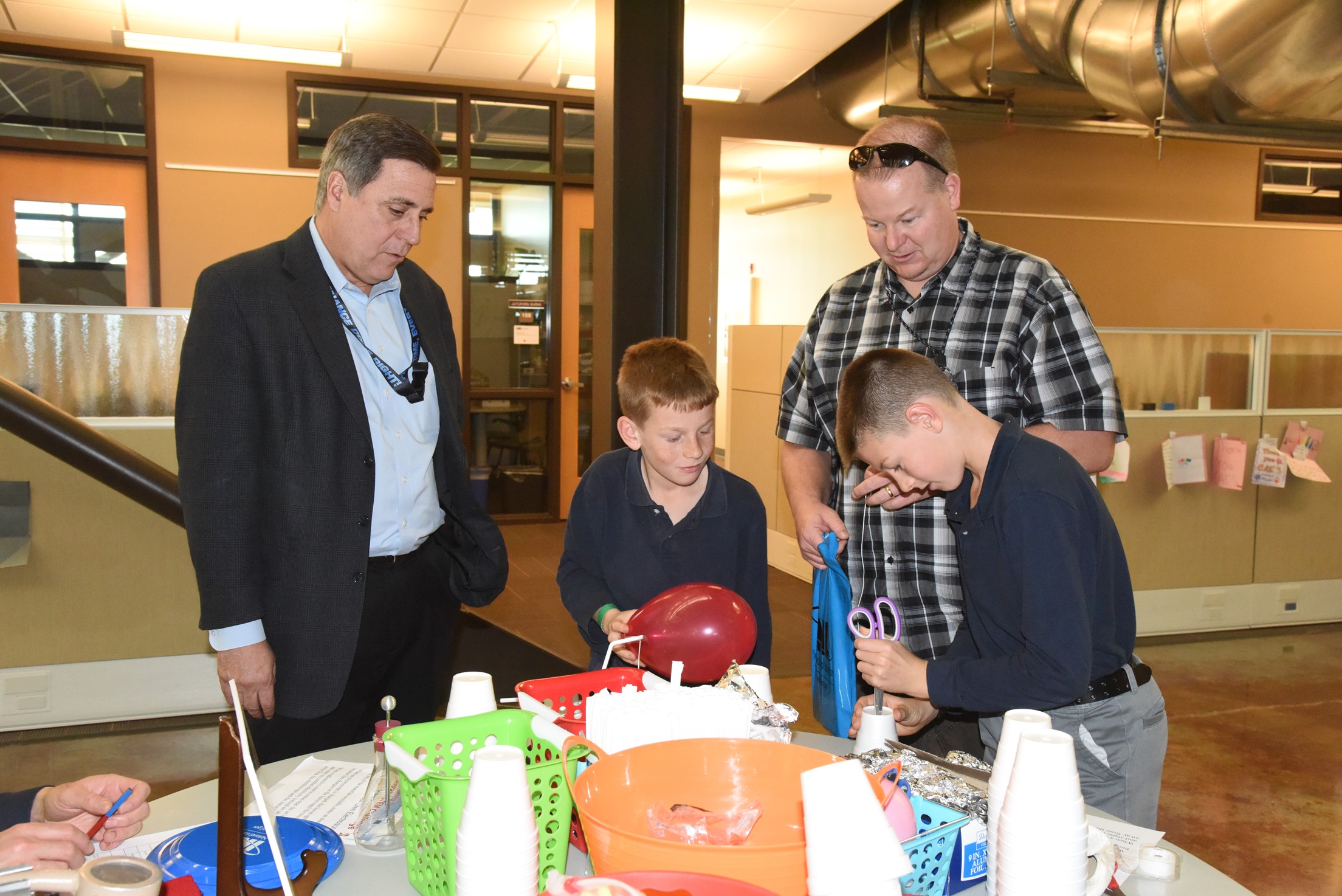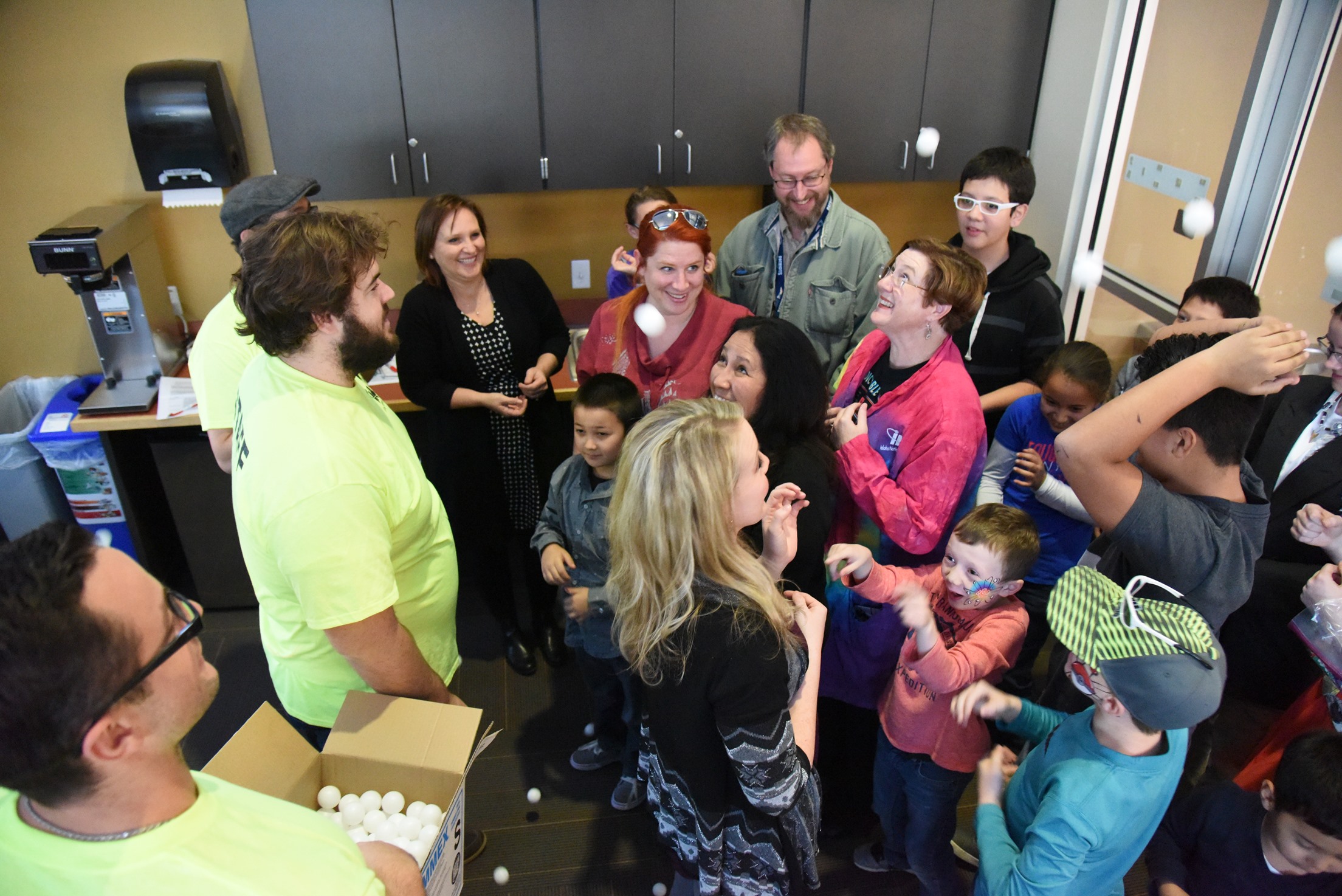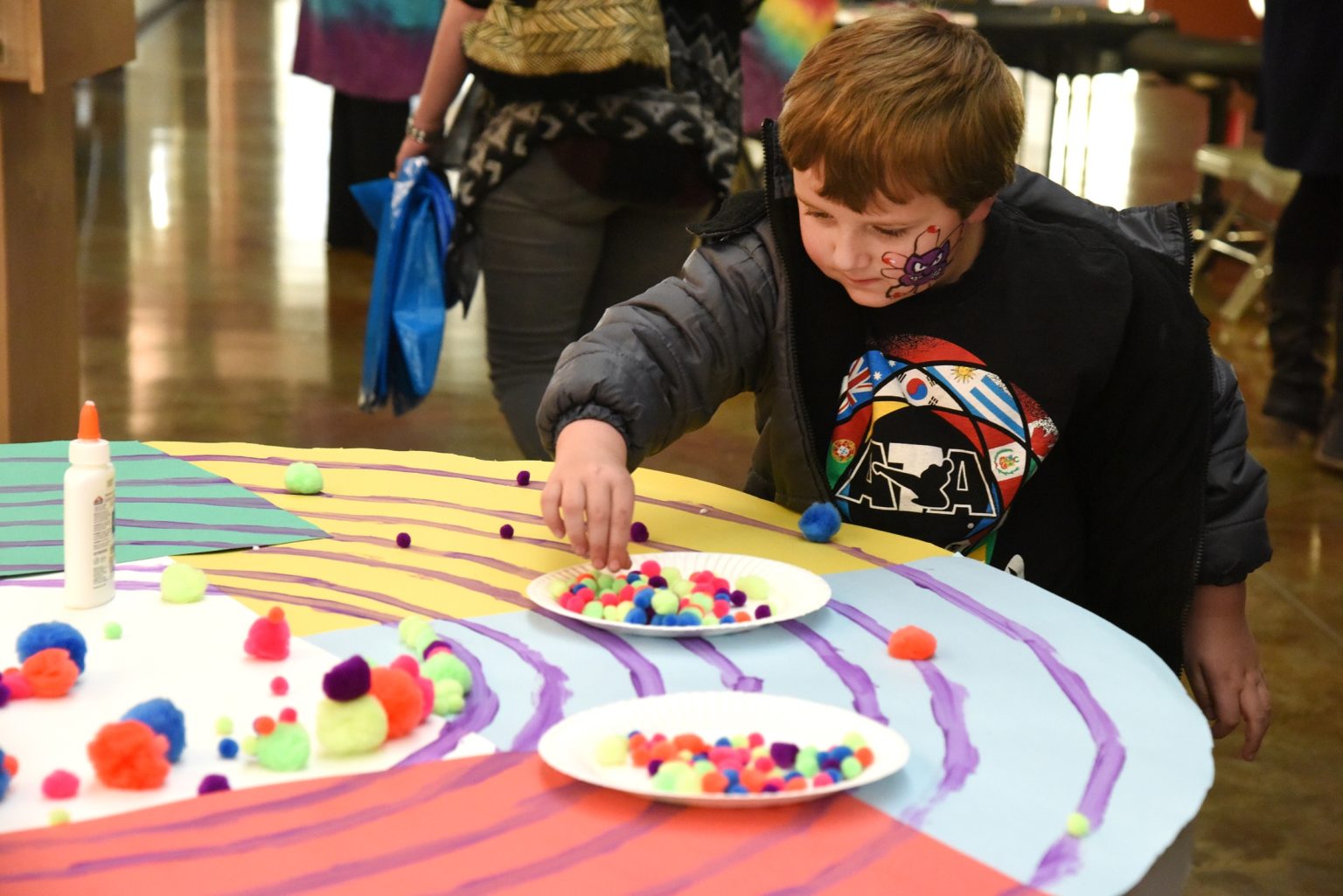Research shows that students are considering future career paths as early as middle school. Introducing them to science, technology, engineering and mathematics (STEM) subjects at an early age is vital to building the talent pipeline at Idaho National Laboratory.
This was a driving force behind Family Nuclear Science Night on Nov. 3 at the Center for Advanced Energy Studies in Idaho Falls. More than 200 attendees participated in several hands-on educational activities geared for elementary and middle-school children.
“I like science,” 10-year-old Raquel Rodriguez said. “School can be boring, but it might be fun if it were more like this.”
Dozens of INL employees volunteered to help at the event, held in recognition of Nuclear Science Week. Every third week of October, people celebrate NSW to focus on the vital role nuclear science plays in everyday life and to expand awareness about new contributions, innovations and opportunities in the field.

Following opening remarks from INL Director Mark Peters, participants visited stations to play “Nuclear Science Bingo,” create an electroscope from a foam cup and aluminum foil, learn about common sources of radiation, build a helium atom, see a space battery, or have an atom painted on their faces.
“Make sure to feed your curiosity,” Peters said to the students in attendance. “Science is fun because every new day brings with it the possibility of some great discovery.”
“We’re having a great time,” said Mary Rose Holtz, an INL employee who attended with her son, Hunter. “It’s a fun way to share with the kids what we do at our jobs.”
Employees repurposed the Snake River Room of CAES to create a “Human Reactor,” where ping pong balls and a handful of participants demonstrated the chain reaction that occurs inside a nuclear reactor.
The four-walled, 3-D computer assisted virtual environment—or CAVE—was opened for guided tours, and proved to be one of the most popular stops. “The CAVE was really cool,” said 10-year-old Paige Scates.
Her sister, Hayden, preferred the cloud chamber activity: young scientists used dry ice and isopropyl alcohol to craft an inexpensive homemade particle detector. After learning about alpha, beta and gamma rays, they used flashlights in a darkened room to see particles “squiggling like worms” across the bottom of the cloud chamber.

In addition to nuclear scientists from INL, a number of famous historical figures were in attendance: Idaho Falls High School students dressed up as physicists such as Marie, Pierre and Irène Curie, Lise Meitner, Hans Geiger and Chien-Shiung Wu. Visitors used biographical booklets to ask these famous guests about their contributions to nuclear science.
“I asked Albert Einstein where he was from,” Rebecca Pennock said. “He’s from Germany.”
Other students dressed as figures with INL connections, including Walter Zinn, who opened Experimental Breeder Reactor I in 1951, and Adm. Hyman Rickover, who managed the Navy’s nuclear-propulsion project for a number of years at the Site.
Rebecca Pennock’s brother, Seth, didn’t have any questions for Adm. Rickover, but he did have a favorite of his own—the station where he answered a question about nuclear science in exchange for “Cosmic Cotton Candy.”
Other favorites included “Working Safely with Nuclear Materials,” a station where children learned about the importance of safety and how INL protects radiation workers by dressing in personal protective equipment.
Family Nuclear Science Night was hosted by INL, CAES and the University of Idaho American Nuclear Society Student Chapter, in partnership with Mothers for Nuclear and Idaho Women in Nuclear.
View more photos from the event here.





